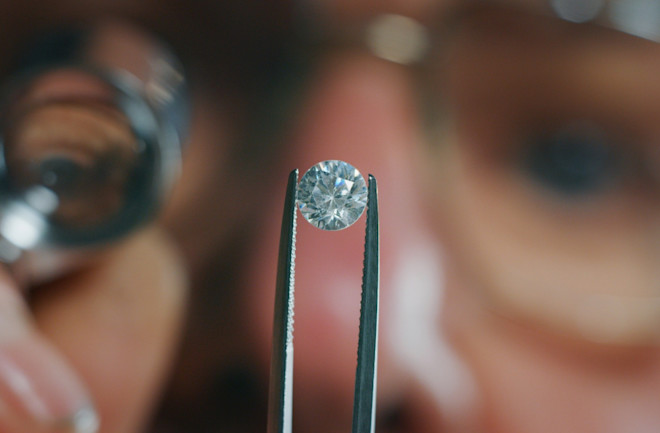In recent years, the world of gemstones has seen a significant shift, with consumers increasingly seeking alternatives to traditional mined diamonds. Among these alternatives, moissanite and lab-created diamonds have gained popularity for their beauty, ethical considerations, and affordability. This article explores the characteristics, differences, and benefits of moissanite diamond and lab diamonds, helping consumers make informed choices.
Table of Contents
What is Moissanite?
Moissanite is a naturally occurring mineral known as silicon carbide (SiC). Discovered in 1893 by French chemist Henri Moissan, it was initially found in a meteorite, making its origins extraterrestrial. Today, natural moissanite is extremely rare, which has led to the development of synthetic moissanite for commercial use.
Moissanite is renowned for its exceptional brilliance, often exceeding that of diamonds. Its refractive index (2.65) is higher than that of diamonds (2.42), which contributes to its remarkable sparkle and fire—the colorful flashes of light that can be seen when the stone is moved. On the Mohs scale of mineral hardness, moissanite ranks 9.25, making it one of the hardest substances available, second only to diamonds, which rank 10. This durability makes moissanite suitable for everyday wear in rings and other jewelry.
Moissanite is available in various colors, including colorless and shades of yellow and green. Higher-quality moissanite is nearly colorless and displays excellent clarity, comparable to that of high-grade diamonds.
What are Lab Diamonds?
Lab-created diamonds, also known as synthetic or cultured diamonds, are real diamonds that are produced in controlled laboratory environments. They have the same physical, chemical, and optical properties as natural diamonds, making them an excellent alternative for consumers who prioritize ethical sourcing.
One of the primary advantages of lab diamonds is that they are chemically identical to mined diamonds. They share the same crystalline structure, hardness, and refractive properties, meaning they exhibit the same beauty and brilliance. Furthermore, lab diamonds are produced using advanced technology that minimizes environmental impact, making them an environmentally friendly option. Unlike mining, which can cause significant ecological damage and human rights issues, lab diamonds are created in a manner that promotes sustainability.
Cost is another significant factor in favor of lab diamonds. They typically cost 20-40% less than their natural counterparts. This affordability allows consumers to purchase larger or higher-quality stones without breaking the bank.
Moissanite vs. Lab Diamonds: Key Differences
While both moissanite and lab diamonds offer beautiful alternatives to natural diamonds, they differ in several key aspects. One of the most notable differences lies in their composition. Moissanite is made from silicon carbide, while lab diamonds are created from carbon, just like natural diamonds. This distinction means that the two types of stones have different optical properties, which can influence their appearance.
In terms of brilliance and fire, moissanite often has a more pronounced sparkle than lab diamonds. This is due to its higher refractive index, which results in more light dispersion. However, this distinctive sparkle may not appeal to everyone, as some consumers prefer the classic look of diamonds. Additionally, moissanite typically has a slightly warmer color than diamonds, although higher-quality moissanite can be nearly colorless.
When it comes to durability, both moissanite and lab diamonds are suitable for everyday wear. However, some individuals may prioritize the traditional appeal of diamonds over the unique sparkle of moissanite.
The Ethical Considerations
Ethical sourcing is a growing concern among consumers, and both moissanite and lab diamonds address this issue in different ways. Moissanite, being a lab-created stone, is considered an ethical alternative to mined diamonds. There are no environmental or human rights concerns associated with its production, making it a responsible choice.
Lab diamonds also offer a more ethical option compared to natural diamonds, particularly in terms of reducing the environmental impact associated with mining. Lab-created diamonds are free from the ethical dilemmas often associated with the diamond trade, such as conflict diamonds and unsustainable mining practices.
Conclusion
In conclusion, both moissanite diamonds and lab diamonds present appealing alternatives to traditional mined diamonds. Moissanite is renowned for its exceptional brilliance and durability, while lab diamonds offer the same characteristics as natural diamonds at a lower cost, with the added benefits of ethical and sustainable sourcing. Ultimately, the choice between moissanite and lab diamonds comes down to personal preferences regarding aesthetics, ethical considerations, and budget. With a growing awareness of the environmental and social impacts of gemstone sourcing, consumers can make informed decisions that align with their values while still enjoying the beauty of exquisite jewelry.

